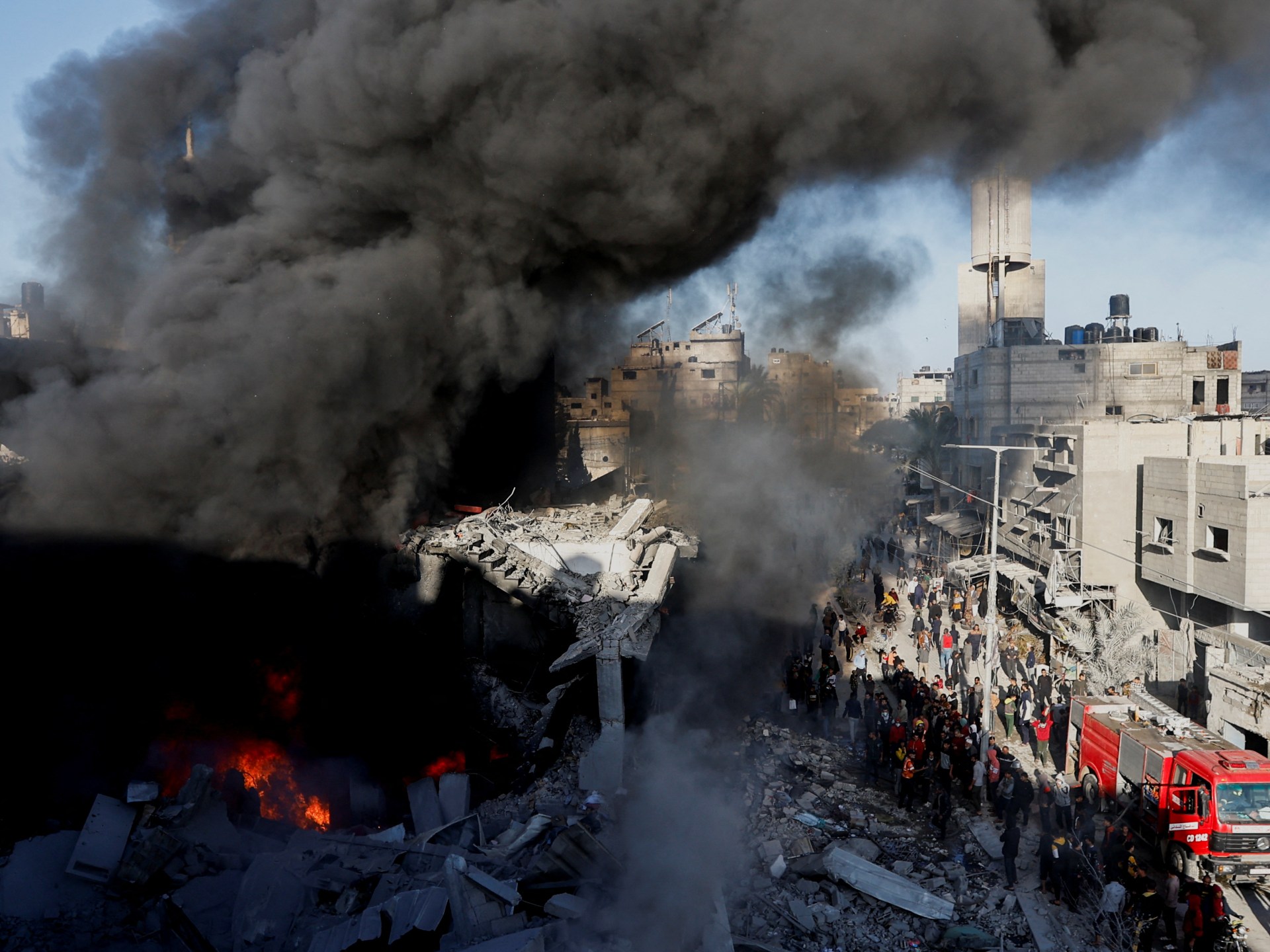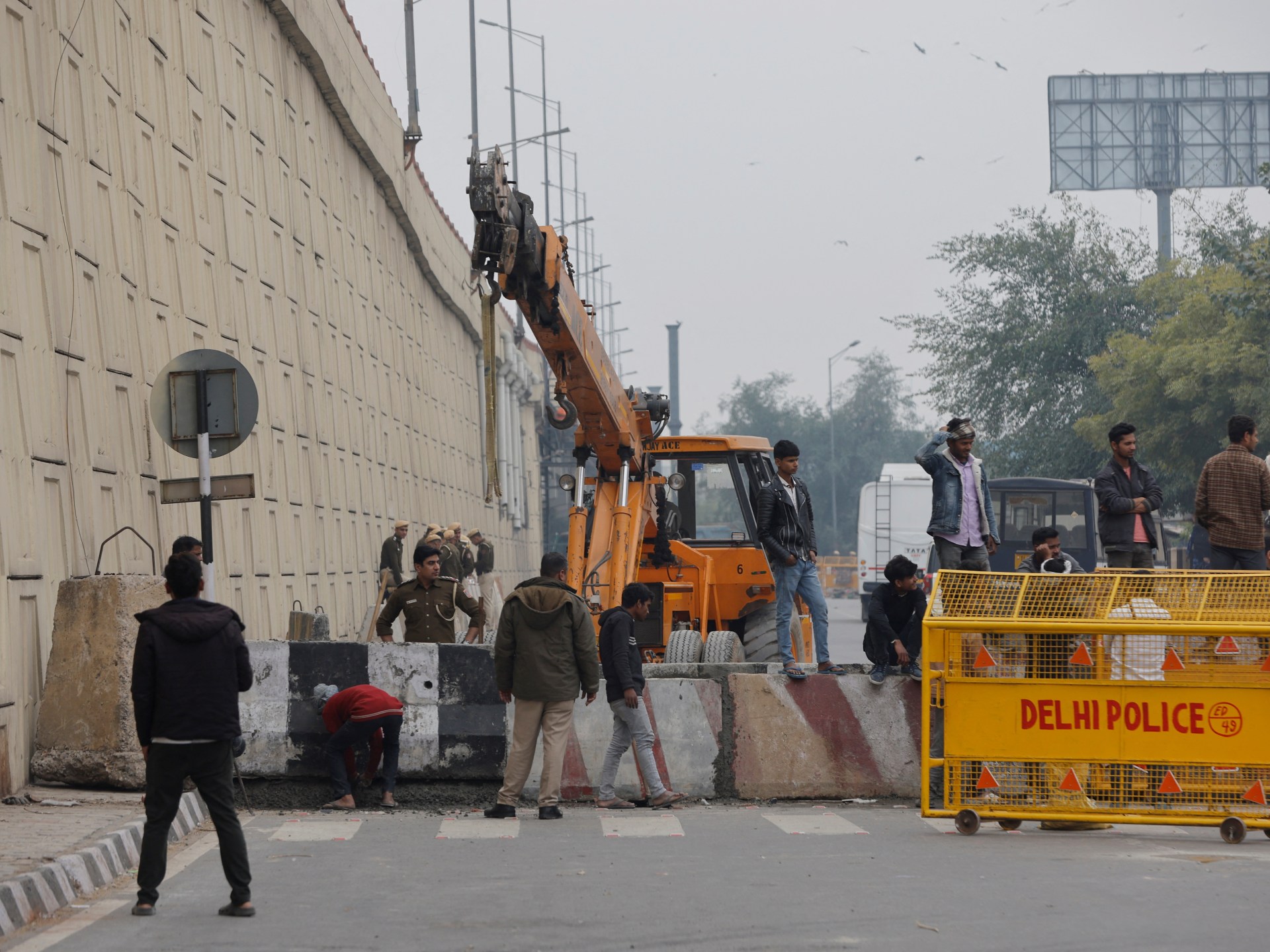‘Jump without thinking’: The parkour runners reclaiming Algiers | Arts and Culture
Bab Ezzouar, Algiers – There are two steps to preparing to jump from the roof of one building to another. Step one: Measure the distance and practice landing on solid ground. Step two: Rehearse running up to the edge.
Bilal Ahmedali is training with two friends and fellow parkour athletes on the roof of an abandoned mall in the Bab Ezzouar neighbourhood of Algiers. The shopping complex’s west wing bends like a horseshoe with a five-metre gap between its ends, and a nine-metre drop to the red-tiled courtyard below.
Months earlier, while training on the same rooftop in a larger group, Ahmedali had run up to the edge but hadn’t been able to take the leap. “I knew I could jump that – I was just scared. I went to the edge 20 times trying to do it, but I couldn’t.”
On this September evening, without much deliberation, he decided to attempt it again – and this time he made it. “I went, saw it once, came back. Saw the gap twice, came back. The third time, I directly ran and boom, I jumped it.”
In a video uploaded to Facebook, Ahmedali can be seen hurtling through the air in a graceful arc before planting both feet neatly on the parapet opposite.
Ahmed Belkahla, 30, who has just finished filming his friend, says he feels delighted, but he notes that there is no “plan B” on a jump like that. “It is joyful and risky at the same time. There’s a saying in parkour: ‘Think before you jump; jump without thinking.’ It’s the hesitation that will kill you.”
A psychology student at the University of Algiers, Ahmedali, 24, says he finds calm in taking these extreme leaps. “I’m someone who has intrusive thoughts. And when I go do parkour, there’s just me and the concrete – everything else is blurred away. It’s me and the run I want to do.”

A sport with a philosophy
Ahmedali and Belkahla are members of a growing parkour community which provides an outlet for young Algerians to make the city – and the sport – their own. In Algeria, where public funding for sports facilities is limited, this community of young people is using social media to showcase their athletic prowess alongside Algiers’s historic mix of architecture. The city’s urban topography reflects epochs in the nation’s past and lends itself to a unique kind of parkour, as these athletes turn the Ottoman Casbah and French colonial boulevards into obstacle courses of their own conception.
Parkourists – or “traceurs”, to use the French term – can be found across the country, although their ranks have been concentrated in the capital since the sport took hold in the early 2010s.
Khadidja Boussaid, a sociologist and postdoc at the University of Algiers, explains that parkour offers young Algerians a way to appropriate public spaces, adapting urban structures to their own ends. “It’s a way of taking ownership of a city, a little like street artists who tag.”
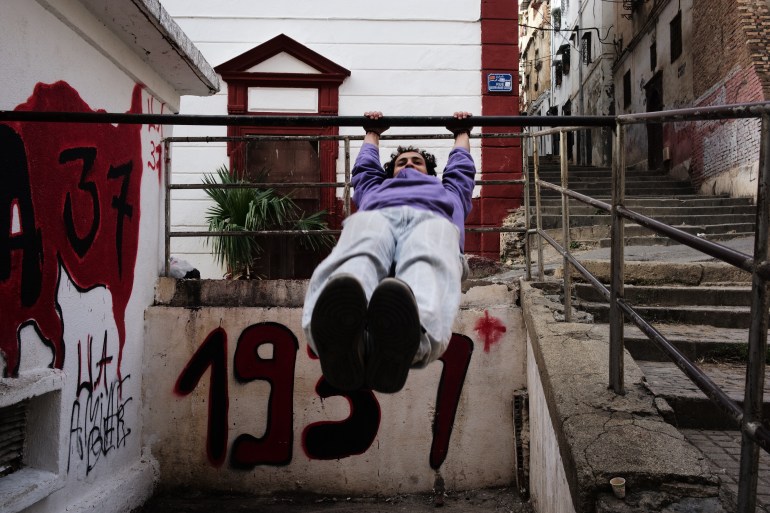
Scouting new training locations is an essential task for Algiers’s traceurs. Sarah Latreche, 33, became interested in parkour while studying architecture at university.
“Most people see buildings as a place to live,” she says. “But for us [in parkour], it’s the building we’re interested in – the construction itself.”
It’s a sport with a philosophy, according to Bobakker Nawi, a 21-year-old student who posts Instagram videos of himself bounding over concrete barriers to soundtracks of Radiohead and Phoebe Bridgers. “Getting through – or over – an obstacle makes you feel some sort of achievement,” he says. “It’s the same in life.”
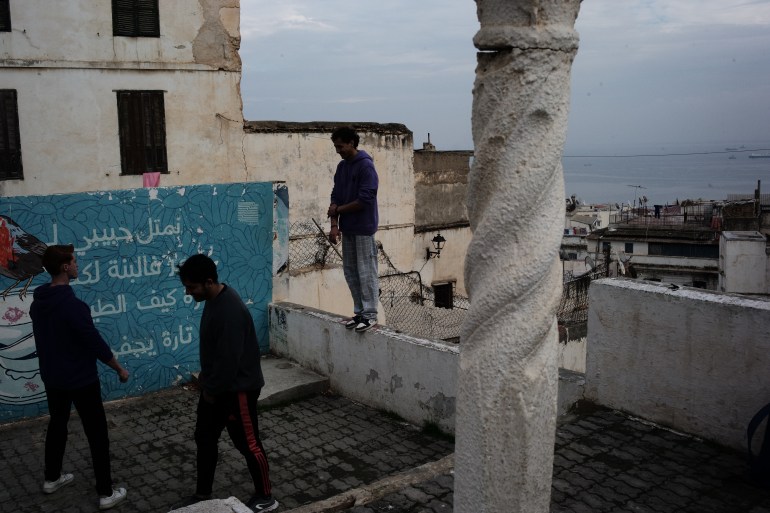
Route to parkour
Parkour emerged in the suburbs of Paris in the late 1980s and integrated elements of French military exercises with a new, free style of running. The term itself is a reworking of the French word “parcours”, or “route”. Around the turn of the millennium, the sport began to receive mainstream recognition when it was featured in blockbusters like Yamakasi in 2001 and the 2006 Bond movie Casino Royale.
Sebastien Foucan, 49, was among parkour’s founders and he, himself, played the villain using the sport to evade Daniel Craig’s James Bond in a construction site fracas. Parkour is often featured in cinema as a virtuosic way of ditching an adversary, but Foucan insists the sport originated as a form of joking around. “What really made it possible was the imagination and capacity for play that we have at a certain age,” Foucan tells Al Jazeera.
“You’re using the urban setting to develop yourself – and others can join in,” he says. “As I see it, that’s how we started.”
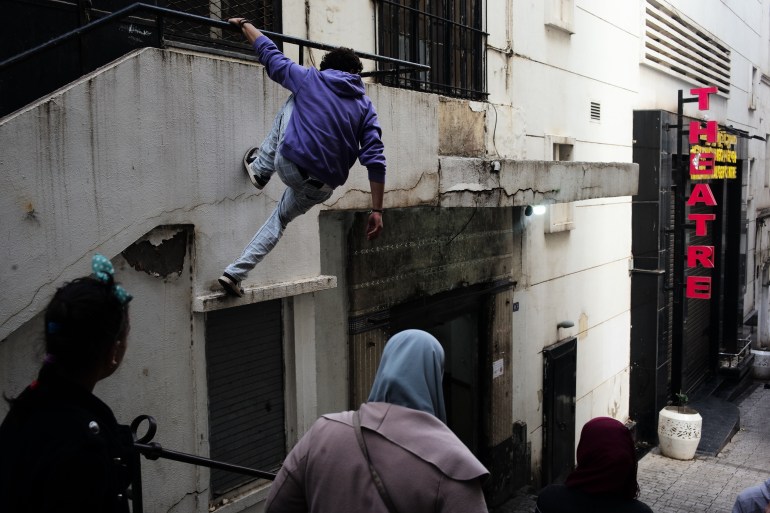
According to Mahfoud Amara, a professor at Qatar University, the global rise of parkour corresponded with a tense political moment in Algeria, as the country emerged from its decade-long civil war in the 2000s. “During the tumultuous ‘Black Decade’ of political violence – when opportunities for leisure and entertainment in the country were severely limited due to security threats – satellite TV channels, including French channels and notably Canal Plus, provided a precious escape from the harsh reality,” he explains. These broadcasts, he says, allowed Algerian youth to connect with new sports and subcultures like parkour.
Imad Bouziani, 23, recalls the influence of films like Casino Royale and thinking that the traceurs on screen looked like superheroes as they outran and outwitted their enemies – often emissaries of the French state. Parkour also signified something abstract for him: “It’s the freedom – the freedom that comes with movement. With the ability to go wherever you want.”
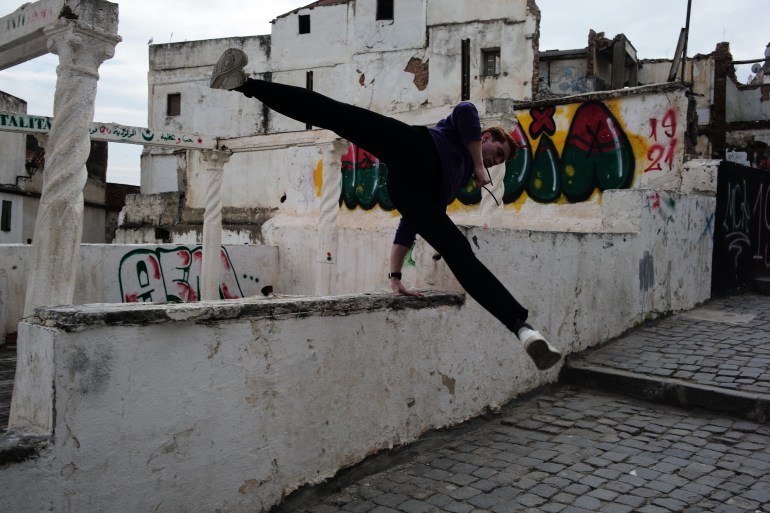
Parkour on the casbah
Since the 2000s, the rise of social media has enabled parkourists to find one another. In 2017, Ahmedali and Bouziani created a WhatsApp group to coordinate training in and around Algiers.
On Fridays, they would get up before sunrise to take 6am buses to the scattered boulders of Roman ruins at Tipaza, or they would go to try out flips on the concrete rooftops of university campuses when classes weren’t in session.
Some of the locations were, at times, off limits. On one occasion, Ahmedali recalls being chased by a security guard who “looked like the Hulk”.
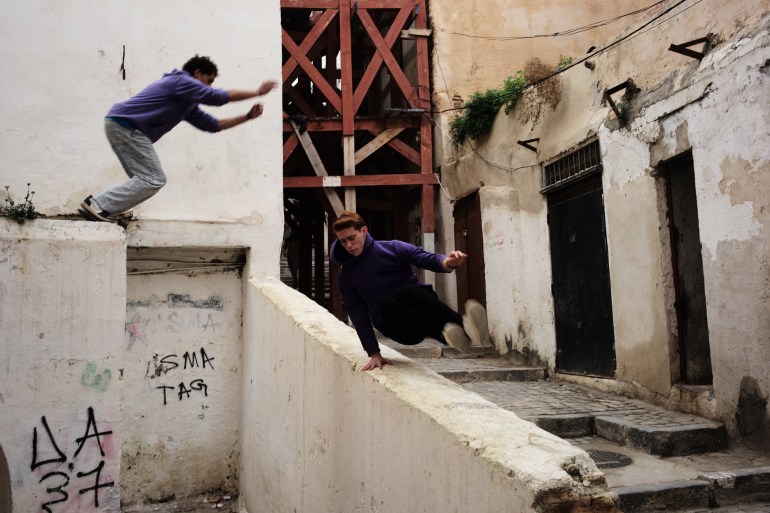
Bouziani’s favourite place for parkour, however, was always Algiers’ historic Casbah. Although he has family ties to the area, his primary interest in training there lay in its variety of buildings and its iconic status as a bastion of resistance during the Algerian War of Independence.
Social media also helped to bring traceurs together from across the country for an annual “Parkour Day”, hosted for the first time in Algiers in 2014. People will go to extremes to take part. For his part, Ahmed Bendaho took a bus and then a train some 1,000 km (621 miles) from Béchar in the Sahara Desert to Algiers’ Parkour Day in 2019.
Bobakker Nawi puts it simply: “Community is so important. You feel that what you are doing has meaning when other people do it, too.”
It’s a self-selecting group, and that’s part of what has solidified their relationships. “You share the thing you love with people who love it, too.”

La Sablette
Parkour is an extreme sport; some traceurs have had to leave it behind when relocating, for personal or professional reasons, to places like Dubai or Canada. For others, injuries have marked a turning point. Just before the pandemic lockdown, Bouziani suffered a serious knee injury while attempting a double backflip.
Although in good spirits these days, he looks back at the training hiatus as “soul-cracking”, but also adds that the imposed pause gave him time for introspection: “I identified why I got injured and it was mainly my poor physical conditioning. So the conclusion was to get stronger.” Bouziani is now focusing on long-distance running instead.
But for Fares Belmadani, 27, parkour is something he’s firmly committed to professionally in Algeria. Now a certified parkour coach, he aims to promote the sport and help it gain more recognition across the country.
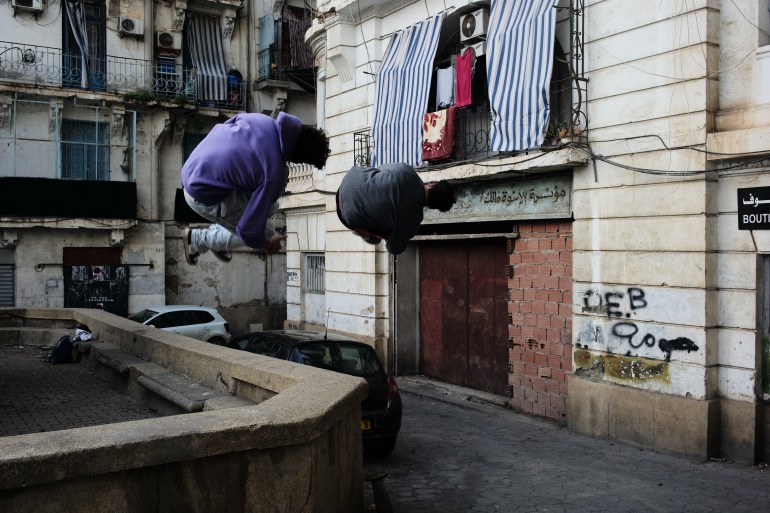
He has already secured public funding for an official parkour area on “la Sablette”, a sandbar projecting, like a hook, from the coastline of Algiers into the Mediterranean.
Sarah Latreche has used her background in both architecture and parkour to create the blueprint for the Sablette training park. Currently, her design is being built at a warehouse in Algiers before its installation on the coast. Amid wood shavings and construction equipment, a jungle gym of life-size Tetris pieces is emerging – the building blocks of a space where future generations can train.
Belmadani estimates they’re about 60 percent finished, and hopes to inaugurate the space before Ramadan this year. “Someone asked me if I’m thinking about leaving Algeria,” he says. But he plans to stay: “The Algerian youth are the potential that Algeria has.”
Check out our Latest News and Follow us at Facebook
Original Source



